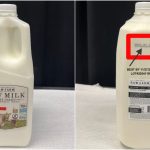Alliyah Perry
- Homesteading is living off the land, but social media influencers have added a modern spin
- After the pandemic, war, and inflation, it’s grown even more attractive.
- Prepping, another survivalist-style niche, has overlap with homesteading and has seen an uptick, too.
Five years ago, Nivek Anderson-Brown and her husband moved to Virginia, where they now raise chickens, grow crops, sell at farmer’s markets, and broadcast content on TikTok — all part of the life of a 21st century, live-off-the-land homesteader.
“People were like, ‘Are you crazy?’ when we first did it. And then, when the pandemic happened, they were like, ‘Tell us what you did!'” Brown said.
Courtesy company
In a time of chaotic supply chains, rising food prices, inflation, and war anxiety, being able to provide for yourself has a new glow, whether it’s through “homesteading” or its close cousin, “prepping,” 10 of the communities’ online members told Insider.
The homesteading life
“Any small amount of trying to grow your own food or preserving. That’s homesteading,” says Ciearra Evans, of The Thrifted Planer homestead.
But the lifestyle tends to build upon itself, Brown said. For example, she started out growing and drying herbs, then realized she had enough land to forage.
Once she did, she found a patch of the mint-like plant horehound — which led to her making homemade cough drops.
“It was just like one thing rolling into another,” she said. “It takes on a life of its own.”
Courtesy company
The term “homesteading” has been co-opted throughout history, from 1970s hippie communes to formerly enslaved Black Americans seeking land in Kansas to fundamentalist Christians raising children off the grid, said Brian Cannon, professor of history at Brigham Young University and author of a book about post-World War II homesteading.
“I think we have, in the US, dating clear back to Thomas Jefferson, the conviction that rural life is wholesome,” he added.
Nivek Anderson Brown
Homesteading also can be a form of political or social dissent, according to a 2016 dissertation Jordan Travis Radke on modern homesteaders, from the University of North Carolina at Chapel Hill. It’s a way to “opt out” of systems that feel entrenched, from the government to climate change, she wrote.
Many homesteaders tend to be white, Cannon said, which is no surprise, considering land is a key (but not essential) element of homesteading, and many Black Americans have lost land throughout US history.
It’s something on the minds of Evans and Brown, who try to garden and create content as well as give voices to Black homesteaders online.
“There aren’t a lot of people that look like me that do this,” Brown said.
Homesteader’s cousin
For some, homesteading can eventually or immediately evolve into “prepping,” a term coined for another survivalist-type niche that focuses on preparing for a harder or possibly more dystopian future, the perception of which has come to pass for some.
Courtesy company
In particular, prepping has seen heightened interest as inflation has grown worse and amid Russia’s invasion of Ukraine-driven anxiety about food shortages, prepper-influencers told Insider.
Tiffany Holloway, an apartment-style prepper on TikTok, said her following grew by about tens of thousands in March amid increasing inflation.
Holloway herself got into prepping after the 2021 ice storms in Texas. One of her neighbors ran out of baby formula. “I ended up having to nurse her baby for her,” via pumping, Holloway said. “This whole experience taught me that you have to prepare.”
Holloway now teaches prepping on TikTok for people with small spaces and lower budgets, as well as focusing on prepping for potential domestic violence as a DV survivor herself – i.e., having a bag with a burner phone, money, and financial and identifying documents.
However, there can be a darker side to the prepper community, as far as folks who lean too far into extreme anxiety or paranoia.
Holloway said she finds some of the content on TikTok fear-monger-y, though she said that’s not her niche.
“I try to keep it pretty positive on my page,” she said.
Most preppers isolate and stay silent about their stores, something known as the “gray man” trope.
“People will become desperate. Ninety-five percent of people don’t have food at their house,” said Cam Hardy of The Casual Preppers Podcast.
If they know you have food, “they’ll know exactly where to go,” he said
Powered by WPeMatico






